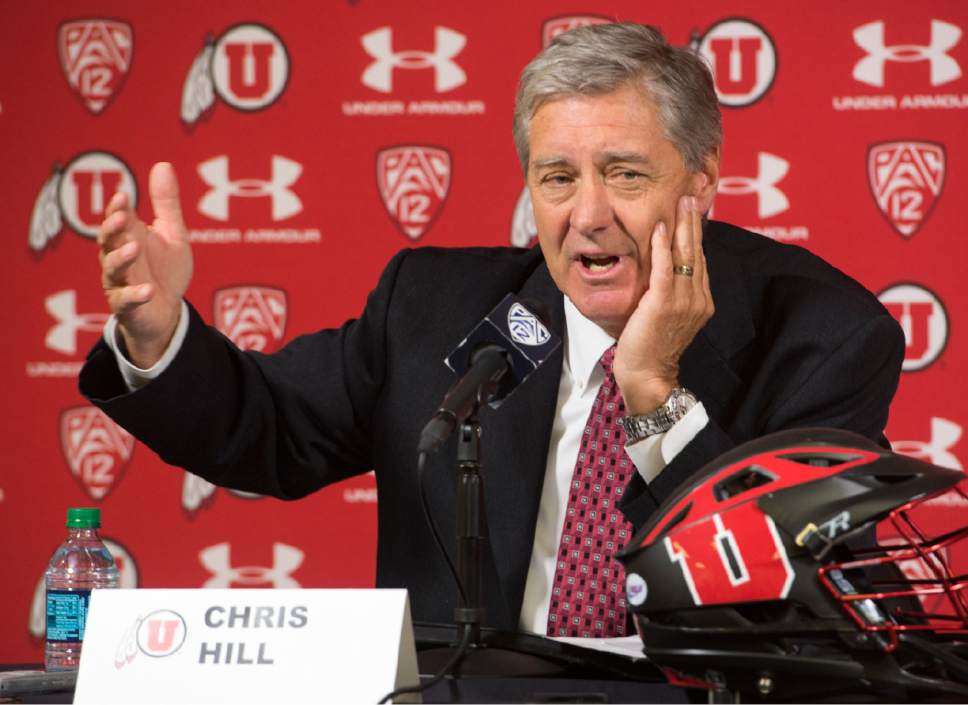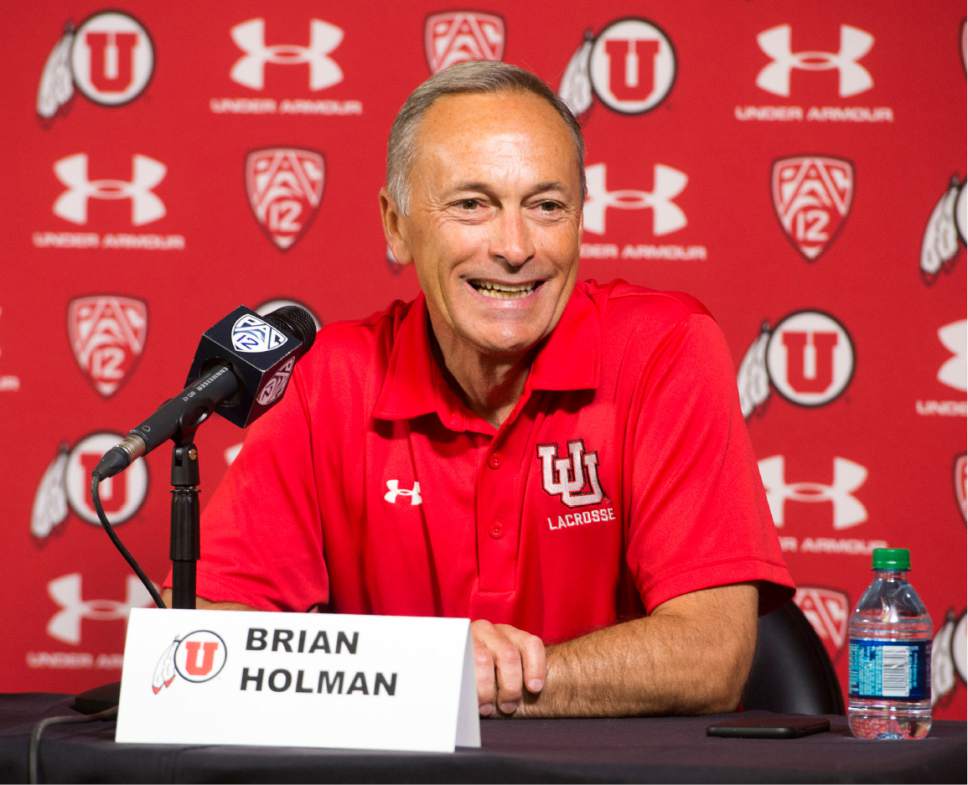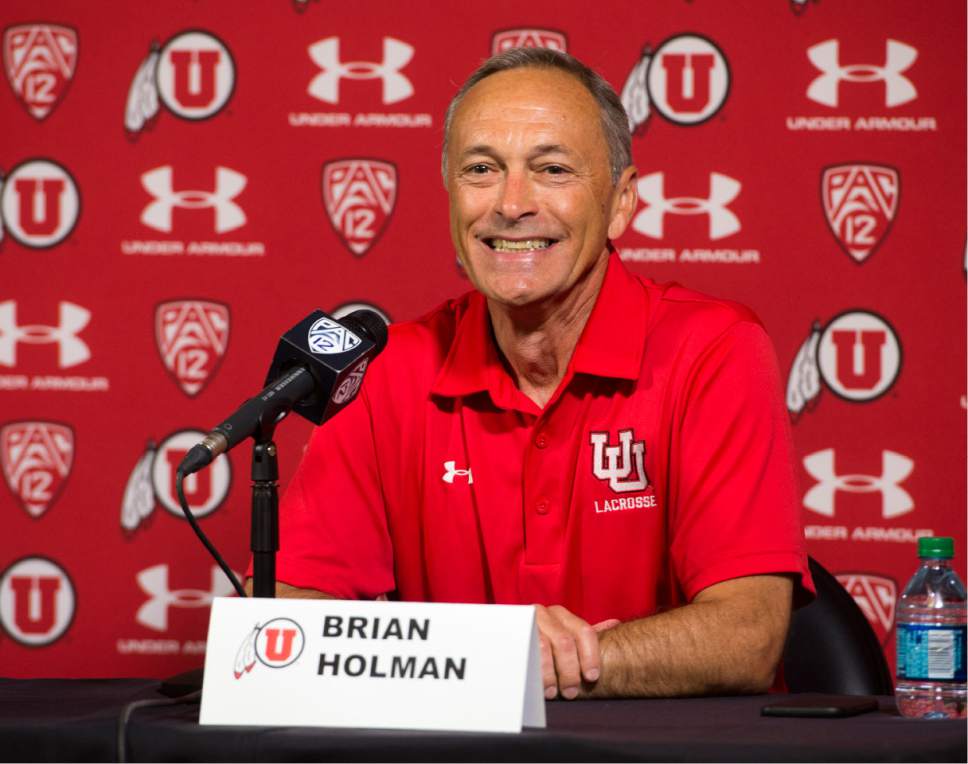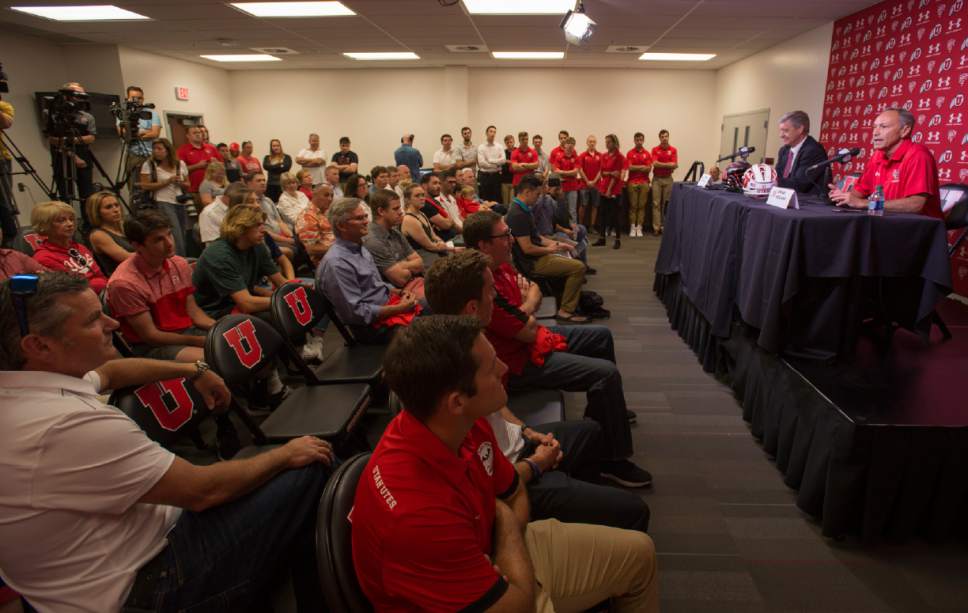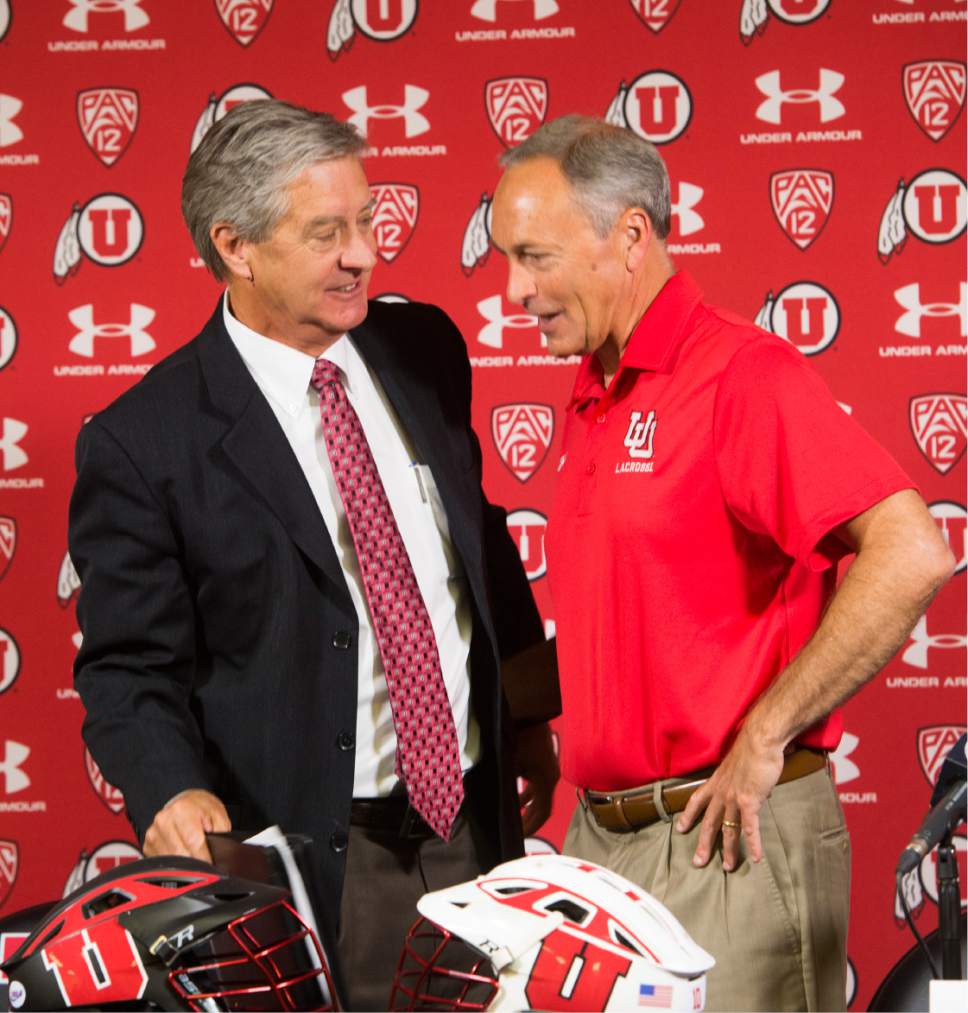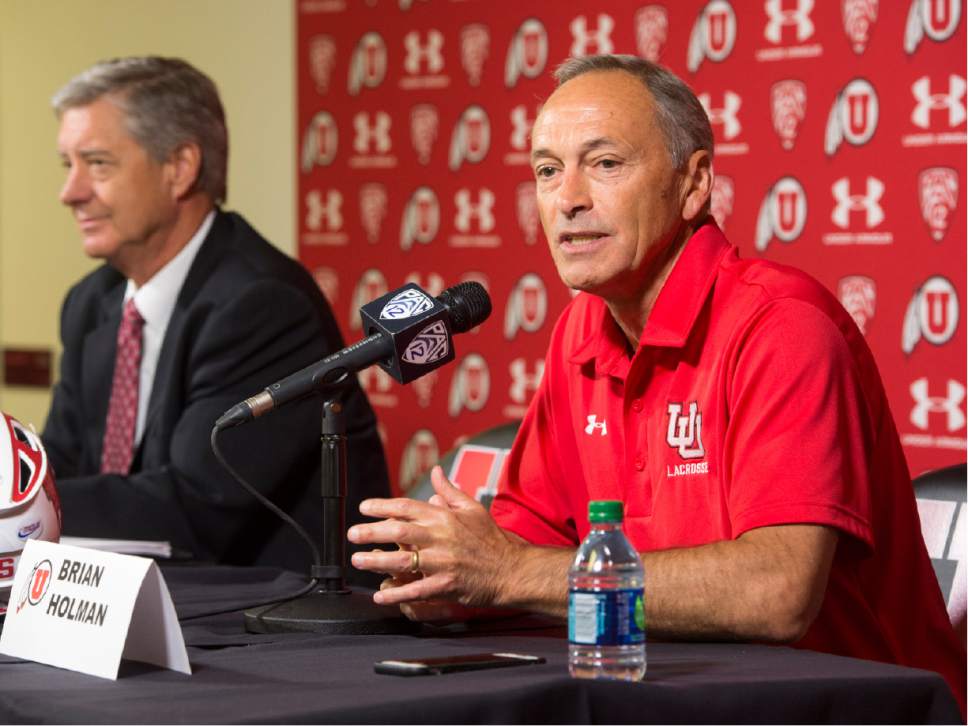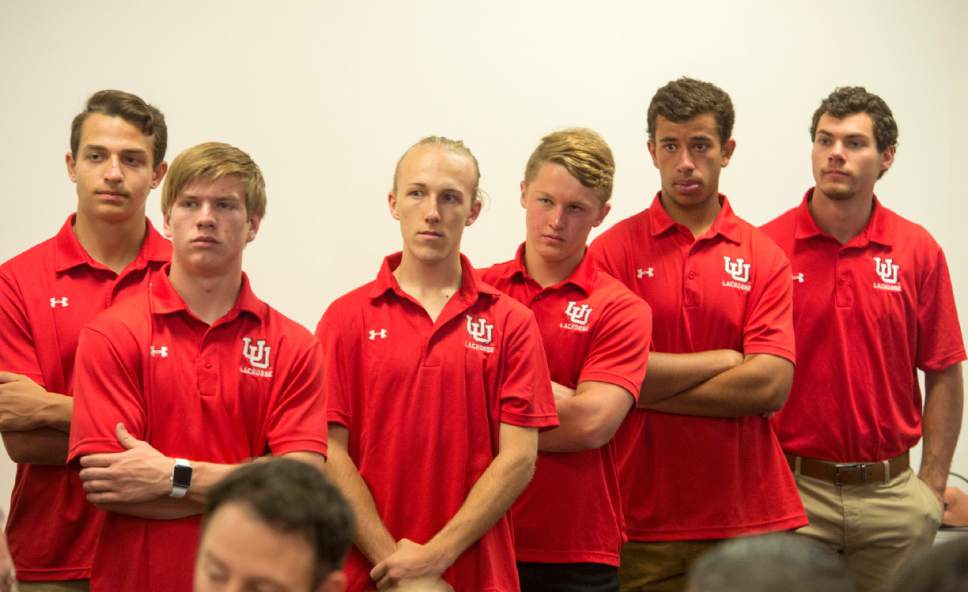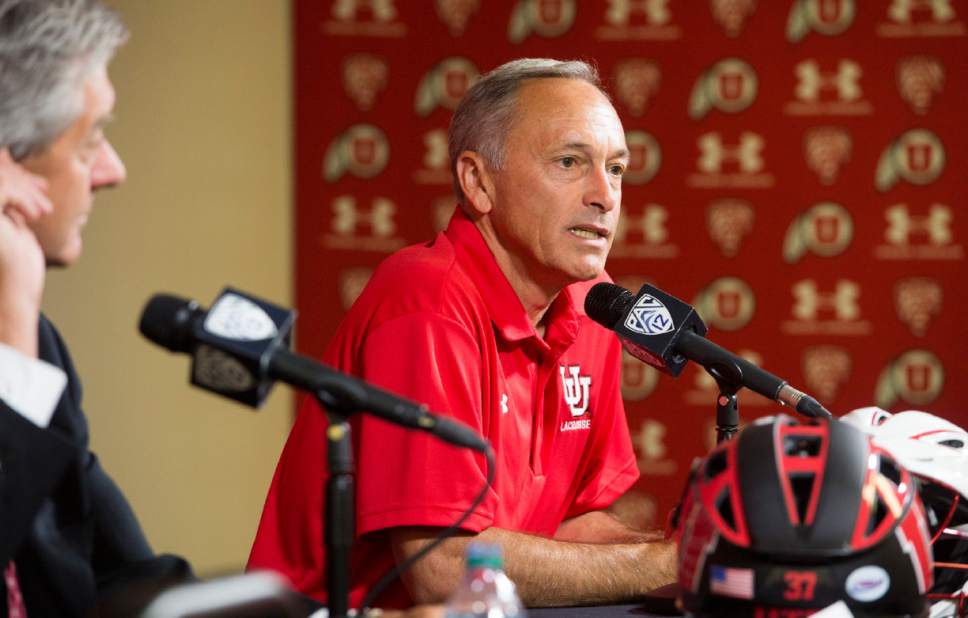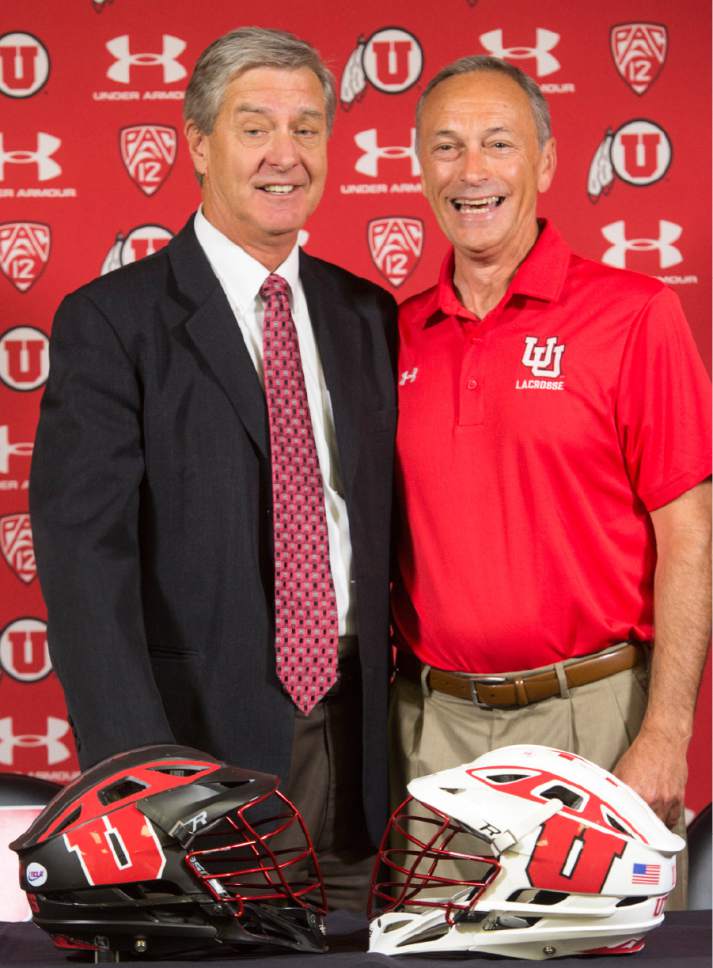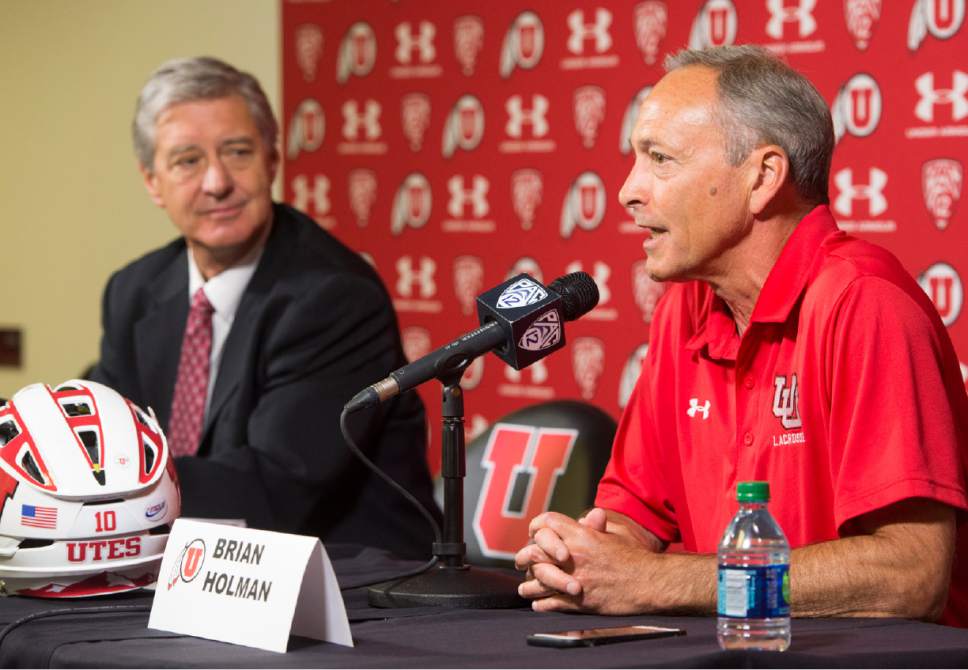This is an archived article that was published on sltrib.com in 2017, and information in the article may be outdated. It is provided only for personal research purposes and may not be reprinted.
Over the past year, there were moments when Brian Holman, Utah's club lacrosse coach, believed he was on the path to becoming a Division I coach again.
But he wouldn't let himself fully buy in until Thursday afternoon, when he learned the Utes were setting up a news conference for Friday morning.
"That's when I said, 'Thank God, we're good,' " Holman said. "I didn't think they were going to call it off."
It's a story that almost defies belief: In one year, a struggling club team with no discernible tradition has arisen to become the 19th varsity sport at the University of Utah. Men's lacrosse was officially added Friday morning, when six members of the university's board of trustees voted unanimously to bring it under the Utah athletics tent with little drama and a good bit of cheering on a conference call.
When it plays its first season in the spring of 2019, Utah will be the Westernmost Division I team in men's lacrosse — Denver and Air Force are the closest geographically — and the first Pac-12 school to add the sport.
In embracing lacrosse, Utah saw a chance to forge itself as a leader in the Pac-12, getting in early on a sport that is expanding. With major financial backing, a Division I-worthy staff already in place, and an easy translation to existing facilities, the Utes decided they couldn't pass up the chance.
"To be very honest, I was very skeptical that this could come the way it did — in this day and age, it's very tough," Utah athletic director Chris Hill said. "Some things came together."
The Utah High School Activities Association recently sanctioned the sport for high school, and Holman said many East Coast players are interested in leaving familiar surroundings and coming west: He has committed players from 16 states for next year's incoming class.
Hill said he thinks several Pac-12 programs may be "on the edge" of adding men's lacrosse (five Pac-12 schools have women's teams), but by being first to the table, the Utes could force their Western competitors to play catch-up.
"I thought this morning, 'How would [football coach Kyle Whittingham] feel if he had the entire Western part of the country to recruit, and nobody else could?' And I thought that'd be pretty cool," Hill said. "Everything we do, we want to make sure we're being an innovator in the Pac-12."
The biggest factor in lacrosse's corner is money: The Utes announced the sport has received a $15.6 million endowment that will fund 75 to 80 percent of the program's annual budget. While the gift was registered to an "anonymous" donor, airline executive David Neeleman (whose son plays on the team) has been one of the primary financial forces behind molding Utah club lacrosse recently. Utah lacrosse's "Founders Club" of over 100 members has been collecting donations for a potential endowment over the past year.
The Utes themselves will start out contributing $300,000 (with the amount increasing 4 percent every year after) for lacrosse's annual budget, and the rest of the budget will be covered by the endowment, which is probably a blueprint for any other sport wishing to join the athletic department.
In January, U. of U. president David Pershing established an eight-person committee to officially consider adding lacrosse as a new sport. Chairwoman Harriet Hoph said the committee was initially skeptical that it could work.
But the more conversations they had, the more the committee's concerns were assuaged. The endowment helped secure the fiscal sustainability of the program without hurting other sports. With a male-majority student body and women's sports outnumbering men's sports, adding lacrosse would be Title IX compliant. Lacrosse also has one of the highest academic ratings in the NCAA, and Utah saw an opportunity to raise its profile in the classroom.
Pac-12 commissioner Larry Scott helped push for the addition of lacrosse, viewing it as a TV property for Pac-12 Networks and a fast-growing sport that he enjoys.
"He's a fan of lacrosse, so he was enthusiastic about it," Hoph said. "But he also pointed out there's certainly a lot of interest in lacrosse, and just because there's growth, he saw it as a win."
Holman will be retained as the Utes head coach, and he's expected to keep his staff — which includes three Major League Lacrosse players. Utah won't be able to sign recruits until the fall and won't be able to offer financial assistance until July 1, 2018, but the team is already recruiting and working with compliance; Holman said he had received 40 text messages from recruits on Friday morning before Utah's news conference.
The team will likely start with eight scholarships split among 40 players before building its way up to a full 12.6-scholarship allotment. They'll play games on the women's soccer field and practice on the artificial surface in the center of Utah's track. The Utes are in early talks with the ACC, Big Ten and Big East to join a conference.
Holman said he understands the jump Utah will need to make to compete at the D-I level, acknowledging it will take a few years to get the program where he wants it to be. And while it's been an unlikely journey to get Utah's lacrosse where it is today, the next leap will take a lot of blood, sweat and tears.
"Be prepared, I'm warning you guys coming back in the fall," Holman said, pointing at his players lining the room. "I like those smiles now, but you probably won't be smiling come Sept. 6."
Twitter: @kylegoon —
The program
• Men's lacrosse is the 19th varsity sport at Utah.
• First season will be played in the spring of 2019.
• Utes will retain club coach Brian Holman, a former assistant at North Carolina.
• Budget will be funded with a combination of athletic department support and a $15.6 million endowment.
• Utes will likely start at eight scholarships, building to a full 12.6 scholarship allotment.


